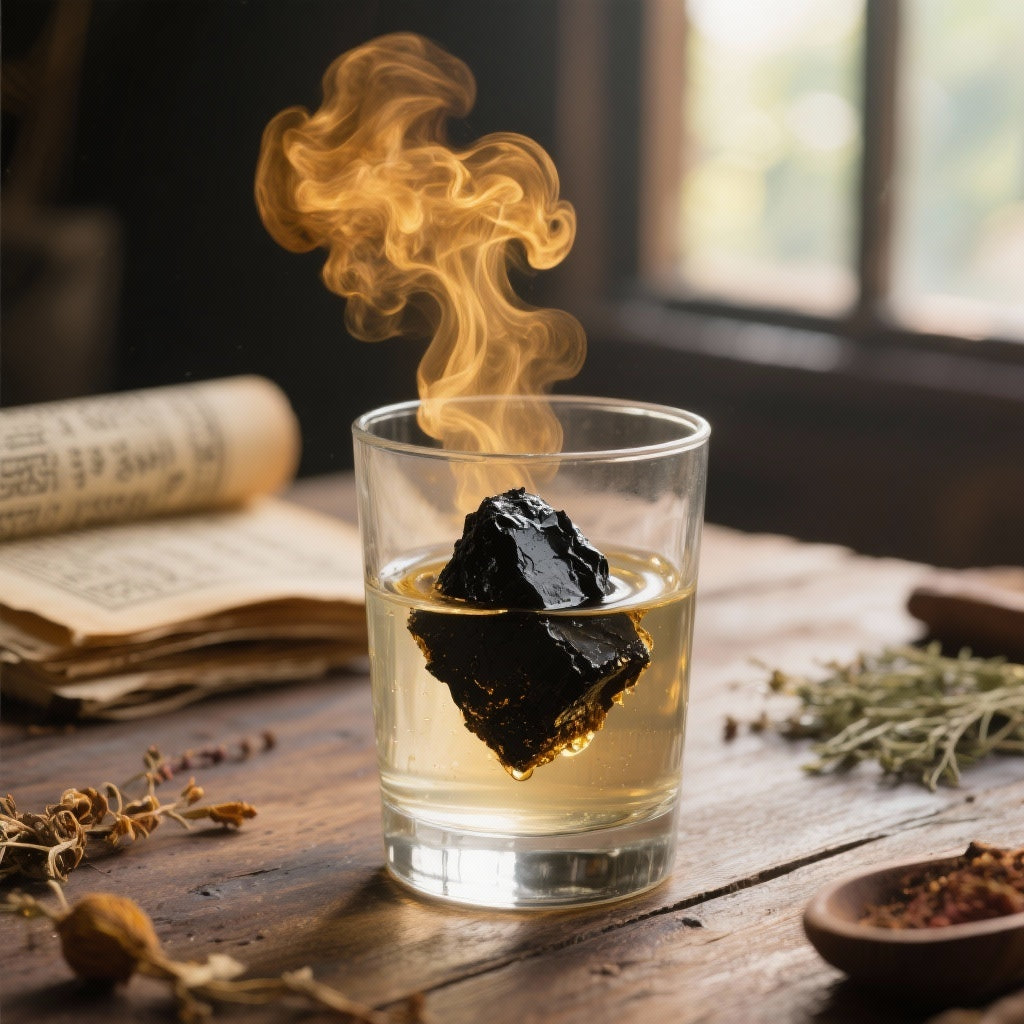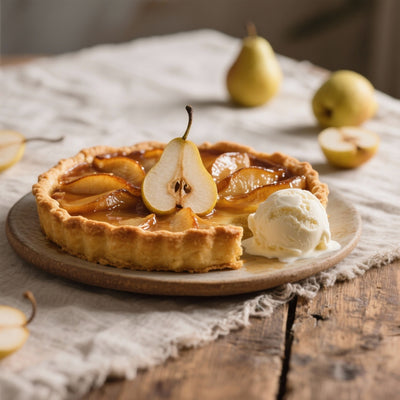The 8 traditional criteria for recognizing an authentic Shilajit according to Ayurveda
Shilajit, often called "black gold of the Himalayas" or "the tear of the mountains," is one of the jewels of Ayurvedic medicine. Rich in fulvic acid and over 84 essential minerals, its benefits for vitality and regeneration are legendary. However, with its growing popularity, the market is flooded with counterfeits and inferior products. So, how can you distinguish the genuine treasure from a mere imitation?
Fortunately, the age-old wisdom of Ayurveda has bequeathed us a series of practical and sensory tests. These eight traditional criteria, simple to perform, will allow you to become a connoisseur and verify the purity of your Shilajit. Learn to trust your senses to ensure you are consuming only the best that nature has to offer.
1. The Solubility Test: Clarity in Water
This is the most fundamental and revealing test. A pure and authentic Shilajit should dissolve almost completely in warm water or milk, without leaving any grainy residue. This is a sign of proper filtration and purification.
How to proceed:
- Take a small piece of your Shilajit resin (about the size of a grain of rice).
- Dip it in a glass of lukewarm water.
- Stir gently or let it dissolve naturally.
Expected result: Pure Shilajit will color the water a golden-brown to reddish hue, creating a homogeneous and translucent solution. If you observe sand particles, dirt, or an opaque residue at the bottom of the glass, it is likely an impure or counterfeit product.
"Purity is revealed in dissolution. What is true melts away without leaving a trace, what is false exposes its impurities."
2. The Flame Test: Proof of Non-Combustibility
Unlike many plant resins, genuine Shilajit does not burn. It is mineral in nature, not plant-based. This simple test allows you to identify imitations made with tar or other flammable resinous substances.
How to proceed:
- Place a small piece of Shilajit on a non-flammable surface (such as a sheet of metal).
- Bring the flame of a lighter or a candle close to it.
Expected result: Genuine Shilajit will bubble and expand under intense heat, transforming into a white or grayish ash. It will never catch fire or produce a flame. If it does ignite, it is a sure sign that it has been mixed with other substances.
3. The Malleability Test: Temperature Sensitivity
The consistency of pure Shilajit is unique and reacts predictably to temperature. This plasticity is a key indicator of its authenticity, reflecting its complex composition of minerals and organic matter.
- With heat: Held in the palm of your hand, the Shilajit should soften and become sticky, almost like putty, under the effect of your body heat.
- In the refrigerator: Placed in the refrigerator for a few minutes, it should harden and become brittle like glass. You should be able to break it into clean pieces.
Products that remain hard or soft regardless of temperature are often cut with synthetic fillers or stabilizers.
4. The Scent Test: The Scent of the Mountain
The aroma of Shilajit is one of its most distinctive characteristics. It should not smell of burnt tar, rubber, or chemicals. The authentic scent is complex and difficult to imitate.
What you should smell: A strong, earthy, smoky, and slightly animalic fragrance. Ayurvedic texts describe it as "gomutra gandha," meaning it has notes reminiscent of cow urine (a marker of purity in Vedic tradition due to the animal's diet of medicinal herbs). It's a powerful scent that testifies to its rich organic and mineral origin. To better discover its aromas, warm it slightly between your fingers.
5. The Color Test: A Deep and Brilliant Appearance
In its resinous state, pure Shilajit should range in color from very dark brown to glossy black. Its surface should be lustrous. Beware of dull, matte products or those with a suspiciously uniform color, which could indicate the addition of charcoal or clay. The true proof of its color, as seen in the first test, is revealed when dissolved in water, where it should produce a beautiful amber hue.
6. The Alcohol Test: Revealing Insolubility
Just as it dissolves perfectly in water, pure Shilajit is insoluble in alcohol. This simple chemical test allows us to differentiate Shilajit's unique colloidal structure from other alcohol-soluble substances.
How to proceed: Try dissolving a small piece of Shilajit in alcohol (such as vodka or ethanol).
Expected result: Authentic Shilajit will not dissolve. It will form small clumps or filaments suspended in the liquid, but will never create a homogeneous solution. If it does dissolve, it is not pure Shilajit.
7. The Mercury Test: A Historical Perspective
This test is mentioned in classical texts such as the Charaka Samhita . It is important to note it for its historical value, but it should not be reproduced at home due to the toxicity of mercury.
Tradition holds that pure Shilajit has the ability to absorb mercury without altering its own properties. This was considered proof of its alchemical and purifying power. Today, this verification has been replaced by a much safer and more precise method: laboratory analysis.
8. The Purity Test: Total Absence of Impurities
This criterion is a synthesis of previous tests. Ultimate purity means the complete absence of contaminants. After dissolving in water, no visible particles should remain. Properly purified Shilajit is free of heavy metals, microbes, sand, and plant debris. While sensory tests are excellent guides, only third-party laboratory analysis can guarantee this with 100% certainty.
The importance of modern testing: A reputable and transparent Shilajit supplier should always provide a Certificate of Analysis (CoA) from an independent laboratory. This document confirms not only the absence of contaminants but also the concentration of key active ingredients, such as fulvic acid.
Conclusion: Become a Savvy Consumer
You are now equipped with the ancestral knowledge to assess the quality of your Shilajit. These eight tests – solubility, incombustibility, malleability, odor, color, insolubility in alcohol, and absence of impurities – form a set of reliable criteria for distinguishing an authentic product.
By combining this traditional wisdom with the modern requirement of laboratory analysis, you ensure you reap all the incredible benefits of this Himalayan gift. Trust your senses, but always demand transparency.
Explore more content
Ready to incorporate Shilajit into your daily routine? Discover creative ways to use it in our wellness recipes or learn more about nature's treasures on our information blog . Embrace a healthy lifestyle by exploring our tips on the lifestyle blog .











